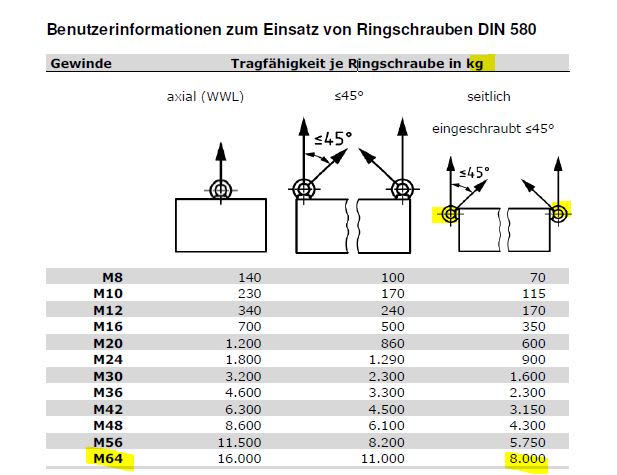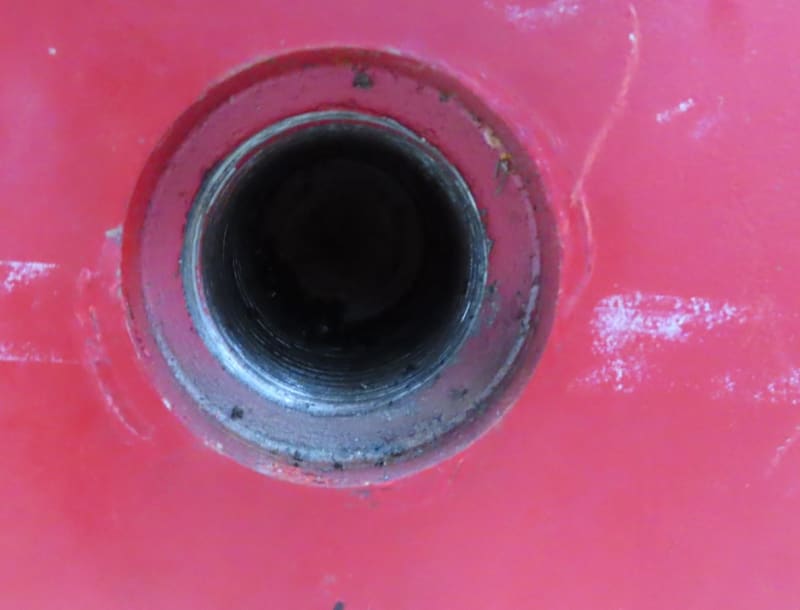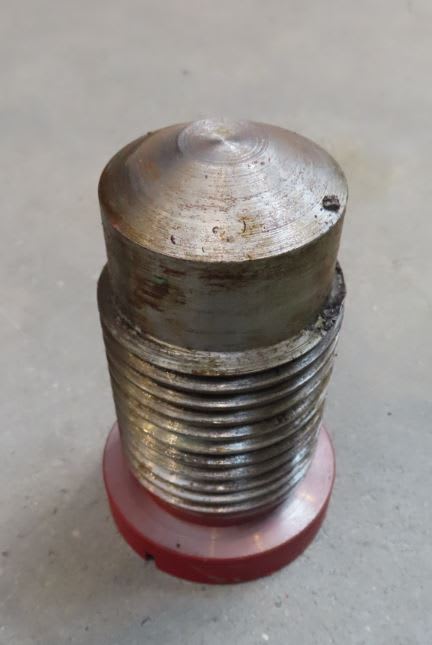Hi there,
We have to lift a heavy plate, it has existing threaded holes to screw in eye bolts.
The thread is an M64, but it is counterbored with a diameter of 80mm and the counterbored surface is not flat.
The contact area of the M64 eyebolt is 120mm.
So the surfaces touching are from 80 to 120mm. Here a sketch showing it. One image is worth 1000 words...

Is the contact area enough to use the maximum load capacity of the eye bolt?
We will also use it on the side of the load and pull at 90º
I was thinking to manufacture a washer to fill the gap, but since it is very irregular (and not flat) and I am afraid it will stick out and then only touch it and not the area of the big diameter.
Maybe a washer made of rubber? It could stick out a bit, then when screwing in the eyebolt it will deform and maybe help a bit increasing the area?
Are these counterbored holes normal to use with eyebolts?
thanks
regards,
We have to lift a heavy plate, it has existing threaded holes to screw in eye bolts.
The thread is an M64, but it is counterbored with a diameter of 80mm and the counterbored surface is not flat.
The contact area of the M64 eyebolt is 120mm.
So the surfaces touching are from 80 to 120mm. Here a sketch showing it. One image is worth 1000 words...

Is the contact area enough to use the maximum load capacity of the eye bolt?
We will also use it on the side of the load and pull at 90º
I was thinking to manufacture a washer to fill the gap, but since it is very irregular (and not flat) and I am afraid it will stick out and then only touch it and not the area of the big diameter.
Maybe a washer made of rubber? It could stick out a bit, then when screwing in the eyebolt it will deform and maybe help a bit increasing the area?
Are these counterbored holes normal to use with eyebolts?
thanks
regards,



